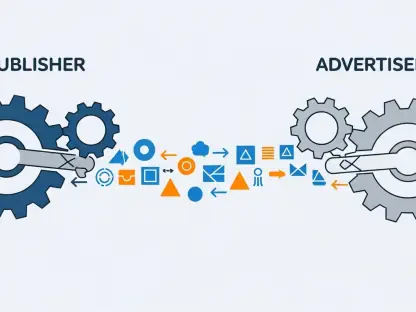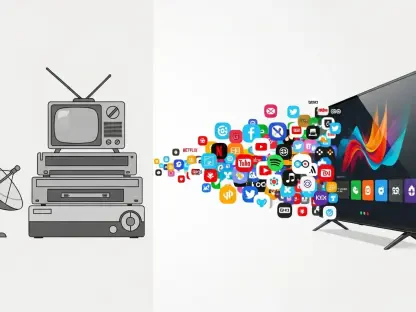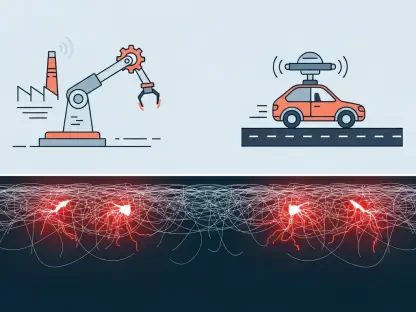What happens when a small group of tech enthusiasts in a quiet Amsterdam cafe sparks a movement that reshapes a global industry? A decade ago, The Things Industries (TTI) began as a modest experiment, yet today it stands as a pivotal force in the Internet of Things (IoT) ecosystem, bridging once-warring tech factions into a unified front. With smart devices now embedded in everything from factory floors to city infrastructure, TTI’s journey offers a striking lens on how collaboration, not conflict, became the key to unlocking IoT’s true potential. This story dives into a transformative decade that turned hype into reality and competition into partnership.
Why TTI’s Decade-Long Journey Stands Out
The significance of TTI’s 10-year milestone lies in its evolution from a niche hobbyist project to a cornerstone of IoT innovation. Starting as The Things Network, a community-driven initiative in Amsterdam, the company tapped into the raw energy of 300,000 developers to test and refine LoRaWAN, a low-power networking technology. This grassroots foundation set TTI apart in an industry often dominated by overblown promises, showing that real progress stems from practical, user-focused solutions.
Beyond its own growth, TTI’s story mirrors a broader shift in the tech world. Where early IoT players battled over standards and market share, TTI’s rise underscores a new era where collaboration trumps rivalry. Its current status—serving 1,500 customers, including 50 Fortune 500 companies, with €4 million in annual revenue—demonstrates how a focused niche can influence a sprawling, trillion-dollar market. This milestone isn’t just a celebration; it’s a blueprint for sustainable innovation.
The IoT Industry’s Bumpy Path to Maturity
A decade back, the IoT landscape was a wild frontier, fueled by ambitious predictions like Cisco’s 2011 estimate of 50 billion connected devices by 2020. Such forecasts painted a utopian vision, but reality lagged with fragmented standards, incompatible systems, and unmet expectations. Businesses faced confusion as competing technologies clashed, leaving consumers skeptical of IoT’s promised revolution.
TTI emerged amid this chaos, initially as a small-scale experiment in connectivity. Unlike many contemporaries chasing grandiose visions, the company prioritized tangible outcomes over marketing flair. This pragmatic approach reflected the industry’s slow pivot from hype to function, where the focus shifted to solving real problems like seamless device integration and cost-effective deployment.
The journey wasn’t smooth for the sector at large, with giants like AWS and Microsoft scaling back after overestimating IoT’s immediate scalability. Yet, this retrenchment cleared the way for specialized players like TTI to thrive by addressing specific pain points. Today, the IoT market values practicality, a lesson hard-learned from years of trial and error.
Mapping TTI’s Growth Alongside IoT Trends
TTI’s evolution unfolded in distinct stages, each echoing wider industry currents. From its early days as an open-source LoRaWAN project, the company honed its craft through community collaboration, building a robust developer base. By pivoting to cloud server management for LoRaWAN networks, TTI carved a niche that now drives 30% year-over-year growth, a testament to strategic focus in a consolidating market.
Simultaneously, the IoT sector transitioned from isolated “technology crusades” to a model of interoperability. No single standard—be it LoRaWAN, cellular IoT, or Bluetooth—could claim total dominance, pushing the industry toward integration. TTI’s annual event, The Things Conference, embodies this shift, uniting diverse partners like Qualcomm and Bluetooth SIG to showcase complementary solutions.
This alignment with broader trends highlights TTI’s adaptability. While larger competitors stumbled over unfeasible global network ambitions, TTI’s targeted approach in areas like smart buildings and industrial applications gained traction. Such milestones reveal how specialization can outpace overreach in a field once littered with failed promises.
Leadership Perspectives on Ending Tech Conflicts
Wienke Giezeman, TTI’s co-founder and CEO, offers a clear-eyed take on the industry’s transformation: “The tech wars are over.” He argues that the era of aggressive marketing battles has faded, replaced by a mindset where technologies enhance each other. This philosophy drives TTI’s operations, evident in its €3 million annual reinvestment into research and development for better integration.
Giezeman also reflects on the pitfalls of early IoT exuberance, pointing to cellular IoT’s struggles with unsustainable global network dreams that ended in fire sales. His critique aligns with industry patterns, as even major players recalibrated after overextending. TTI’s grounded stance—rooted in modest beginnings at local meetups—built credibility in a space once rife with distrust.
These insights aren’t mere opinion; they’re backed by TTI’s track record of fostering partnerships over rivalries. By prioritizing interoperability, the company has positioned itself as a trusted hub for testing devices across standards. This shift from conflict to cooperation, as Giezeman sees it, marks a defining moment for IoT’s future trajectory.
Lessons for Thriving in IoT’s Collaborative Age
For businesses and developers navigating today’s IoT landscape, TTI’s experience offers actionable strategies. Specializing in a niche, as TTI did with LoRaWAN cloud management for industrial and smart building solutions, proves the value of depth over breadth. This focus ensures relevance in a market saturated with generic offerings.
Engaging communities also plays a critical role, with TTI’s 300,000-strong developer network providing real-time feedback to refine products. Additionally, embracing integration over competition—seen in TTI’s diverse conference partnerships—helps create systems that work seamlessly across platforms. This approach mitigates the fragmentation that once plagued the industry.
Finally, a willingness to experiment and pivot quickly stands out as a key takeaway. TTI’s “fail fast” mentality, discarding unviable models like hardware sales, allowed rapid adaptation. These principles provide a roadmap for stakeholders aiming to build lasting, collaborative solutions in an IoT ecosystem now prioritizing function and unity over flash and rivalry.
Reflecting on a Decade of Change
Looking back, TTI’s 10-year odyssey from a small Amsterdam gathering to a global IoT influencer captures the essence of an industry in flux. Each step, from community experiments to strategic pivots, mirrored the sector’s own maturation from chaotic competition to purposeful partnership. The lessons learned—specialization, community engagement, and adaptability—shaped not just a company but a new way of thinking.
As the dust of past tech wars settled, a path forward emerged through collaboration. For businesses and innovators, the next steps involve leveraging interoperability to solve real-world challenges, ensuring IoT delivers on its long-held promise. Building on TTI’s example, the focus shifts to creating integrated, user-centric solutions that can drive impact for years to come.









